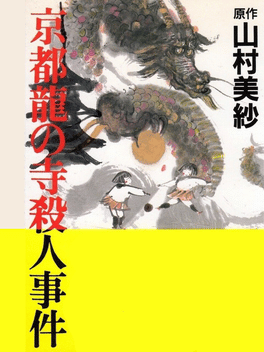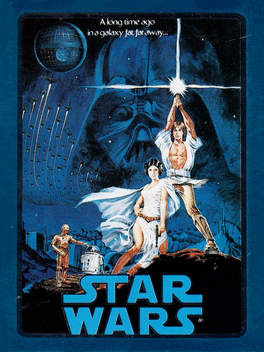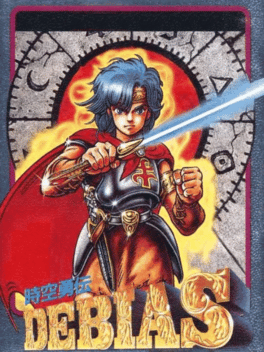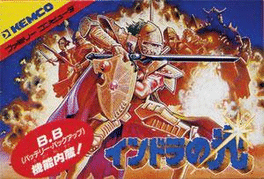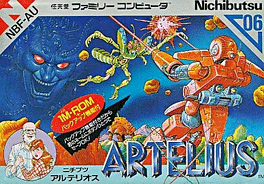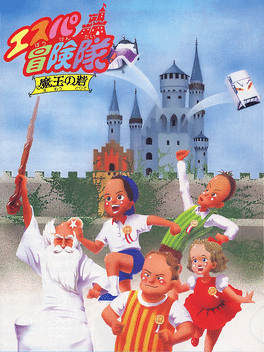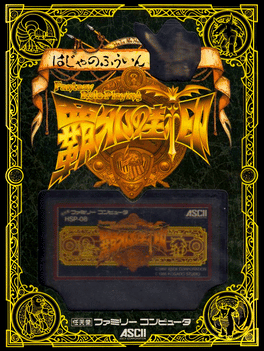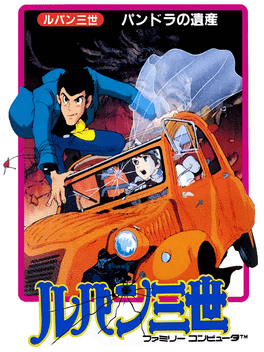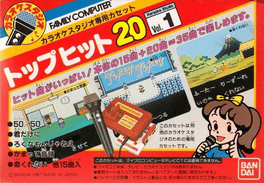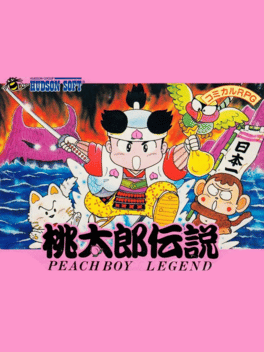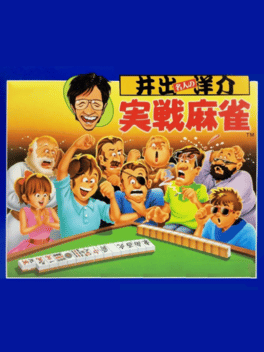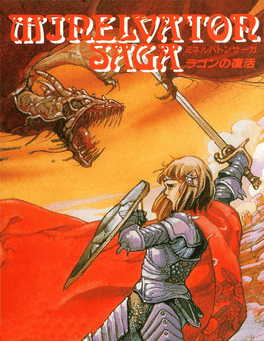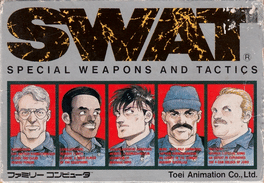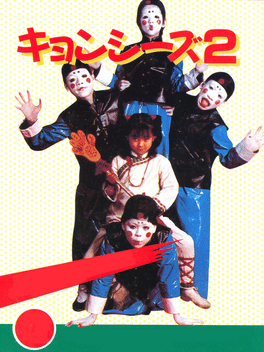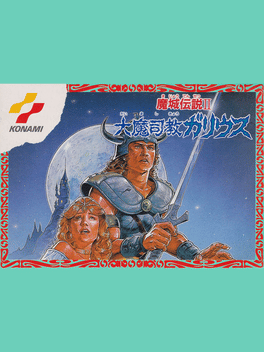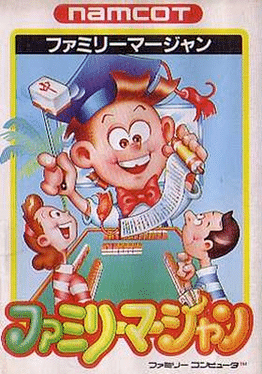New Famicom Games - Page 40
-
Yamamura Misa Suspense: Kyoto Ryuu no Tera Satsujin Jiken
1987
American investigator Catherine Turner has just been accused of a crime committed on the grounds of Kyoto's most famous temple and must prove her innocence by examining crime scenes, collecting evidence and talking to suspects. The first in a series of murder mystery games by Taito written by and named for Japanese mystery writer Misa Yamamura. -
Star Wars
1987
Star Wars
1987
star 6.2Star Wars is a Family Computer video game released in 1987 by Namco. Despite being based on the first Star Wars film. It is the only game in the Star Wars franchise that was released exclusively in Japan. The game is a common side-scrolling platformer where the player controls Luke Skywalker (appearing with black hair due to color limitations), as he travels to join the Rebellion against the Empire. -
Outlanders
1987
Outlanders
1987
In the midst of a violent invasion of Earth by unknown alien forces, photojournalist Wakatsuki Tetsuya comes across a scantily-clad alien woman, cutting a swath of death through the Terran ranks with her sword. After a chaotic struggle, Tetsuya is knocked unconscious, only to awaken aboard her starship. To his surprise, she turns out to be Kahm, the invaders' princess - and she has picked Tetsuya for a starring role in her upcoming wedding. As the groom.... -
Jikuu Yuuden: Debias
1987
Jikuu Yuuden: Debias
1987
Jikuu Yuuden: Debias is a Role-Playing game, developed by Now Production and published by Namco, which was released in Japan in 1987. -
Punch-Out!!: Shouhin-ban
1987
Also known by the unofficial titles of Punch-Out!! Gold and Punch-Out!! Special, with the in-game title of simply Punch-Out!!, recently released on the Japanese Nintendo Switch Online as Punch-Out!!: Shouhin-ban (Prize Version), this was the first released version of Punch-Out!! for the NES/Famicom, which was released in Japan, as a prize for the participants of the official NES Open Tournament Golf (Golf Tournament US Course) competition. The main differences from the later versions is that the Dream Bout with Mike Tyson or Mr. Dream didn't exist yet, and Mr. Macho Man was the last opponent. -
Indra no Hikari
1987
Indra no Hikari
1987
Around the year 2000, mankind departs a depleted earth and travels through space to the plant Ibaru some 8,500 light years away. There, people live peacefully under the protection of a god whose power source is the Light of Indora. However, a demon siphons the light away from the planet and the god begins to slumber. The surface of the planet transforms into a vast desert and monsters begin to appear. The player must quest to put an end to the demon and restore the Light of Indora to the god that protects the planet. -
Artelius
1987
Artelius
1987
A sci-fi themed RPG from Nihon Bussan for the Famicom, released in late 1987. It was never released outside of Japan. -
Esper Boukentai
1987
Esper Boukentai
1987
Esper Boukentai is a platform action game developed by Jaleco for the Famicom and published in 1987. It is an exploration game which uses Jaleco's arcade game Psychic 5 as the basis for the story and the cast of characters which you use throughout the game. Each character possesses different attributes, including their jumping ability, their ability to hover in mid-air, and their strength. As in the arcade, some characters must be rescued in order to make them playable. This game boasts over 50 household items which serve as animated enemies throughout each level. -
Haja no Fuuin
1987
Haja no Fuuin
1987
The seal of the Dark Lord Terarin has been broken and Terarin has been unleashed into the world again. She has stolen the Golden Seal and opened pandora's box, unleashing evil creatures into the world. A young hero is tasked by a king to stop Terarin. He must step into footsteps of Iason, a shepherd that once accidentally unleashed Terarin and fought to seal the Dark Lord again. The hero must enlist the aid of three companions, Guy the warrior, Medi the amazon and Treo the pirate (called Turo in the manual) and find the three keys to Terarin's lair. To face the Dark Lord, they must find the mystical weapons and armor of old and then defeat Terarin and seal the Dark Lord from the world. -
Lupin III: Pandora no Isan
1987
A Lupin III action game for the Famicom. It is based somewhat on the movie Castle of Cagliostro. The game was never released outside Japan. -
Uchuusen Cosmo Carrier
1987
Uchuusen: Cosmo Carrier is an action strategy game where you pilot the titular Cosmo Carrier and combat aliens while gaining intelligence on the solar system, the planets and its moons. Information you gather from satellites with your deployable Mechs will help you find the alien force and destroy them. Once deployed your Mechs walk around the surface and fight turrets and find items/clues. Your viewscreen is where you target alien space-craft, astronauts, moons, and planets and interact with them. The interactions allowed are: Missile, Beam, Shiled(SIC), Move, Communicate, Computer, Parts, and State. Missile launches a rocket with adjustable strength at your target. Beam shoots a laser weapon at your target. The misspelled Shield function lets you decide if you want your shields on or not. Move button has two different sub selections; Warp and Land. Warp lets you travel from planet to planet while Land lets you deploy one of your Mechs on to the surface of a satellite or enemy cruiser. Communicate lets you do jus -
Karaoke Studio Senyou Cassette Vol. 1
1987
Karaoke Studio Senyou Cassette Top Hit 20 Vol. 1 is the first add-on for the Karaoke video game Karaoke Studio, featuring twenty additional songs. It cannot be played without the original cartridge and microphone peripheral. All the game modes themselves remain unchanged. -
Peachboy Legend
1987
Peachboy Legend
1987
An RPG based on the popular Japanese folklore legend of Momotarou, the Peach Boy. This was the first in a series of Momotarou games by Hudson and was only released in Japan. -
Ide Yousuke Meijin no Jissen Mahjong
1987
A Famicom-only Mahjong game that teaches a specific variant called "Attack Mahjong" and one of many Mahjong games presented by expert Ide Yosuke. It also had its own special Mahjong controller. One of a series of Mahjong games presented by Ide Yosuke (sort of the Dr Kawashima of early Mahjong titles), Ide Yosuke Meijin no Jissen Mahjong (or "Ide Yosuke: Master of Attack Mahjong") is a Mahjong game that teaches a very specific gameplay variant. Ide Yosuke Meijin no Jissen Mahjong also came with its own special Mahjong controller that resembles a keyboard. The game is unplayable without it. -
Minelvaton Saga: Ragon no Fukkatsu
1987
In the kingdom of Palmeccia both the King and Queen have been murdered by the hands of a servant of Ragon, son of the Zuhl. Take control of the Prince of Palmeccia in a quest for revenge and to kill the evil Ragon. -
SWAT: Special Weapons and Tactics
1987
SWAT: Special Weapons and Tactics is a role-playing game developed by Shouei and published by Toei Animation. This game was only ever released in Japan for the Famicom and was never translated from the original Japanese language. The player takes control of a five member team of special anti-terrorist agents as they break into a building where a hostage situation is taking place. Their goal is to take out the villains and free the hostages. Battles with gunmen take place in a traditional RPG style turn-based battle. Players enter the commands for each surviving member of the team, including what weapon to attack with, and which target to attack. When not in battle, the player views the building in a traditional 3D dungeon perspective, moving through the hallways, choosing which rooms to investigate, which traps to disarm, and how to proceed to the end of the game within a given time limit. -
Hikari no Senshi Photon: The Ultimate Game on Planet Earth
1987
Photon: The Ultimate Game on Planet Earth is an adventure game developed for the Famicom by Takara, and published in 1987. The English name of the game has special significance, since "Photon: The Ultimate Game on Planet Earth" is also the name of the first commercial version of a game commonly known today as Laser Tag. However, besides the name, and the fact that you play a character who fires a Photon gun, any further connection between the live action game and this video game is unknown. In the video game, you play a soldier who must navigate through several different floors of a dungeon which contains items and traps. The player must figure out how to maneuver through the dungeon in an effort to collect various items that will expand his ability to search, and find various disks which contain hints and messages to further aid the player. The game is played from a third-person behind-the-shoulder perspective and contains pseudo-3D visuals. This game was never released outside of Japan. -
Kyonshies 2
1987
Kyonshies 2
1987
A Famicom adventure game developed by Taito and based on an obscure Japanese movie of the same name. Kyonshiizu is the Japanese name for Jiang Shi, the Chinese hopping vampire. -
Majou Densetsu II: Daimashikyou Galious
1987
Majou Densetsu II: Daimashikyou Galious is a Role-Playing game, developed and published by Konami, which was released in Japan in 1987. -
Family Mahjong
1987
Family Mahjong
1987
A mahjong game by Nihon Bussan and published by Namco for the Famicom. Family Mahjong is another in a long line of mahjong games for the Famicom. Uniquely, at least for the time, it does include a full tutorial mode that will teach the player how to actually play mahjong. It also includes rules for mahjong gambling, which is another feature included in the game. After the player has learned how to play, they can compete against a series of CPU opponents in one-on-one matches, most of whom are attractive blonde women for whatever reason.
